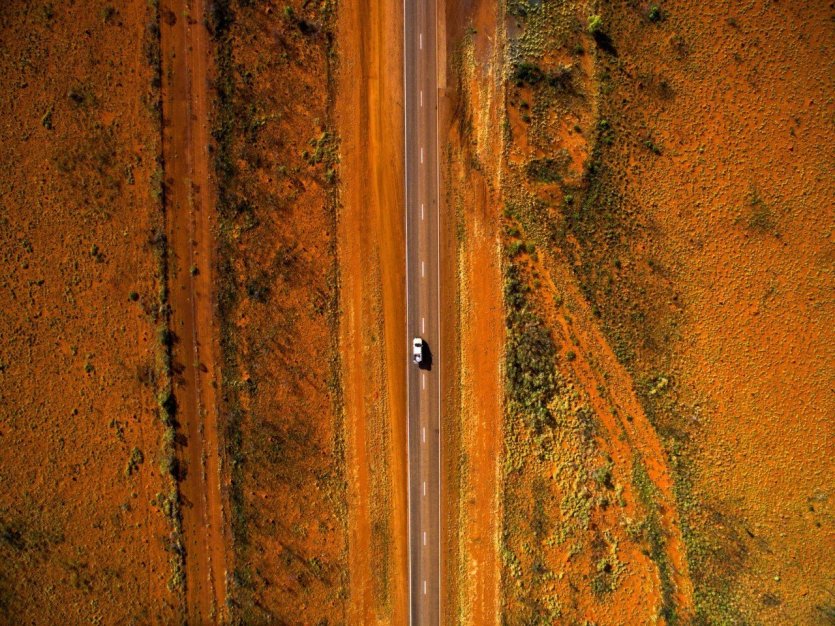
The Explorers Way is the legendary route that crosses the Australian continent from south to north, or vice versa. First driven in 1860 by explorer John McDouall Stuart, its 3,200 km of Outback is now one of the most legendary road trips, attracting travellers from all over the world. From the vine covered hills of the Barossa Valley to the tropical savannah of the Top End, the Explorers Way borders sumptuous natural sites where it is recommended to take a break for a walk, bike ride or canoe trip. On departure and arrival, we will also take the opportunity to visit Adelaide in the south and Darwin in the north, where we will discover urban Australia, with its unique charm. For your next road trip, here are ten sites to discover along the Explorers Way
Adelaide, the sweetness of the South
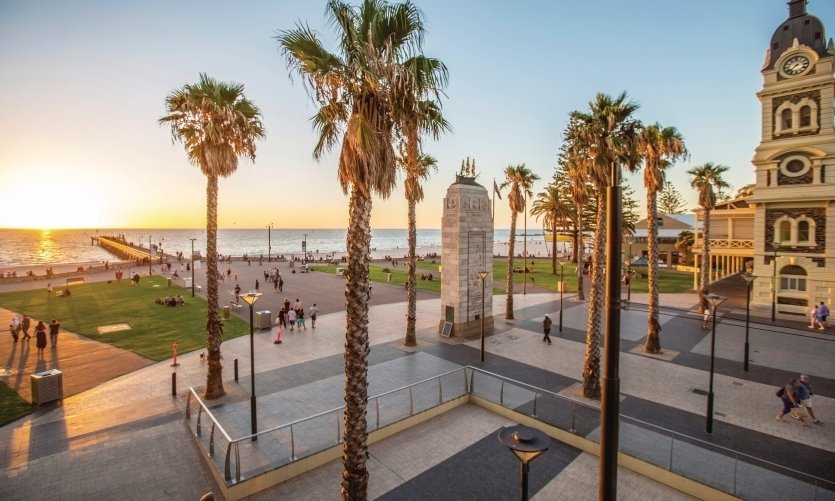
Adelaide is the capital of the State of South Australia. The starting or arrival point of the Explorer's Way, its climate is temperate, its cuisine inventive, its renowned wines and its particularly famous artistic scene: what more could you ask for? Adelaide is located near the sea, offering a splendid setting where it is pleasant to stroll through its parks and gardens and along its shaded streets. The wide choice of restaurants offering world cuisine, to be enjoyed with a glass of local wine, will satisfy gourmets and gourmands
Kangaroo Island, the island of animals
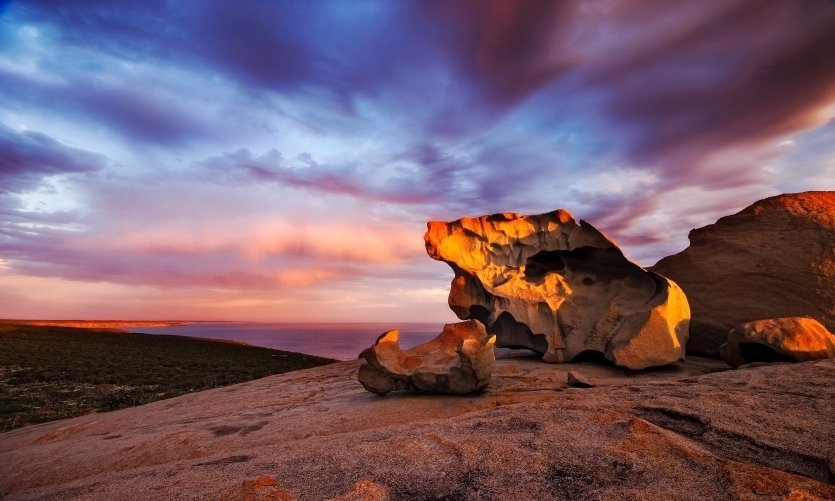
It is off the south coast of the continent, on Kangaroo Island, that you can observe Australia's endemic wildlife in the wild. This 155 km long island is home to impressive red kangaroos that can reach up to 1.80 m! But that's not all, they live with wallabies or adorable koalas that we never tire of admiring. You can also meet seals, sea lions and even penguins!
Barossa and Clare, in the heart of the vineyards
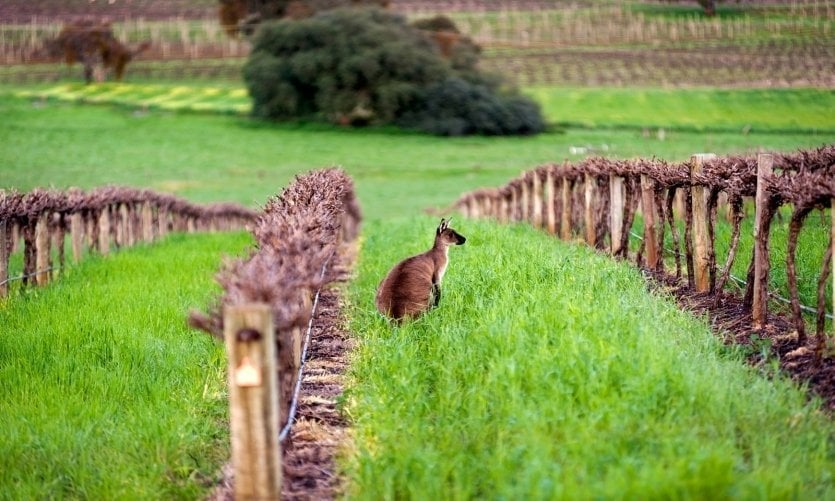
The Barossa Wine Valley is just over an hour's drive from Adelaide. Its rolling plains, dotted with picturesque villages, seem to extend to infinity. It is necessary to taste the wines of the Barossa Valley, especially shiraz, renowned for its high quality. A little further north, Clare Valley is home to some forty estates that are among the oldest vineyards in Australia. Located between Adelaide and the Flinders Ranges region, it is the ideal place to take a break from the road and walk or cycle the Riesling Trail trail before eating out in a good local restaurant.
Flinders Ranges, from trail to trail
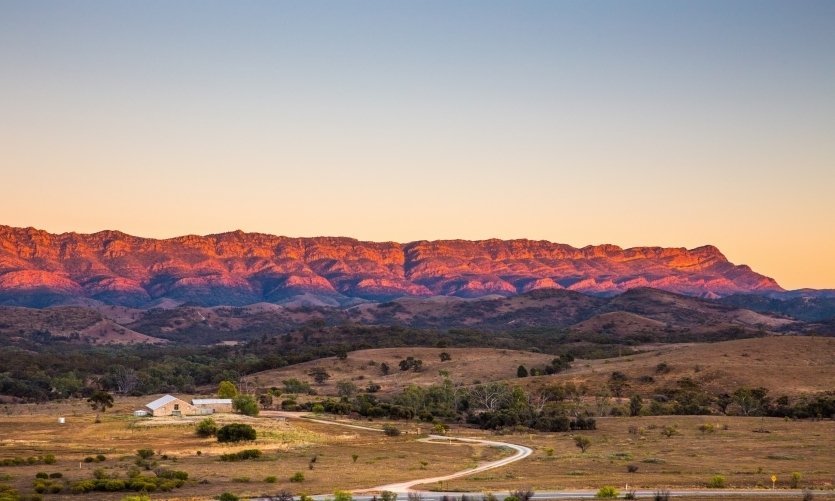
It would be wrong to think that the Outback is just a succession of vast plains: the long Flinders mountain range provides relief to this landscape. It extends over 430 kilometres and culminates at 1,170 metres. Flinders Ranges National Park, one of the most famous in the country, can be discovered along its many hiking trails lined with eucalyptus trees. Endemic fauna consisting of emus, kangaroos and wallabies proliferate in the region. The park also houses the formation of Wilpena Pound, a natural amphitheatre born 800 million years ago.
Coober Pedy, a lunar landscape

The Explorers' Route leads us to Coober Pedy and continues north. The opal capital of the world offers a unique landscape in the heart of the desert. The hostility of the territory and the aridity pushed the inhabitants to dig underground to protect themselves from the extreme temperatures recorded in Coober Pedy, both in winter and summer. These cave dwellings or dugouts (excavations) are to be discovered absolutely!
Alice Springs, an oasis in the desert
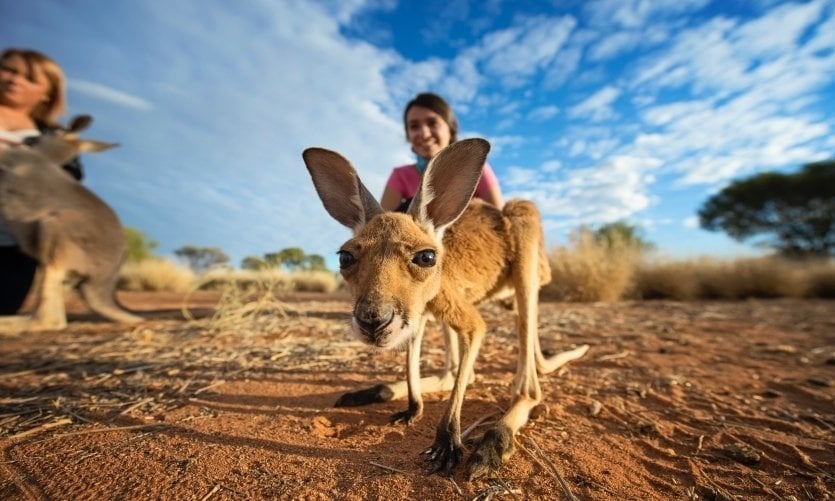
In the middle of the desert, Alice Springs is the "capital" of the Central Australian region. Its geographical location is an asset for visiting the Centre Rouge, a vast desert region. Alice Springs is very active and has many galleries showcasing Aboriginal art and unusual festivities are organized throughout the year. Among them, a camel race and a boat race in a dry river! In April, the Parrtjima outdoor art and light festival illuminates the city and, at the end of the summer, the Alice Desert Festival brings together a large audience to discover its rich artistic programming. It is one of the most emblematic festivals in the Northern Territory
Uluru National Park - Kata Tjuta, a sacred site
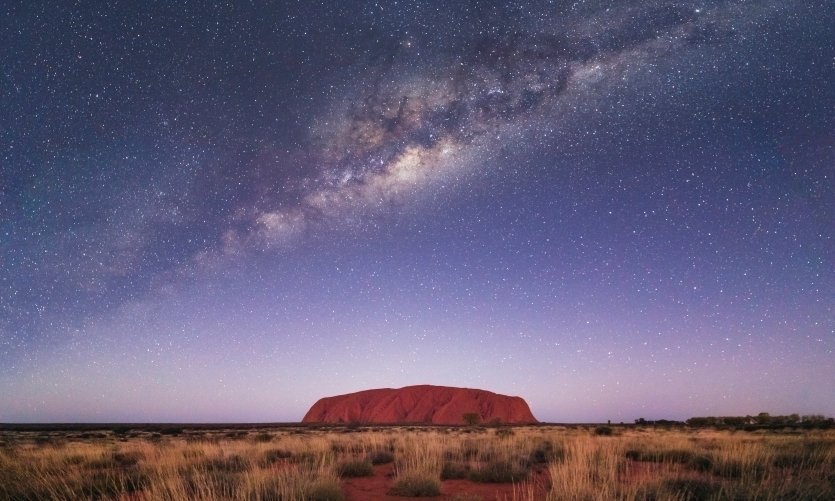
Classified as a World Heritage Site, Uluru - Kata Tjuta National Park is a must in the Red Centre. For the Anangu aborigines, it is even a sacred site. It is true that this gigantic monolithic dome in the middle of the desert is spectacular, especially for its red colour which varies according to the light, contrasting with the blue of the sky, the green of the bush. Note: As of October 25, 2019, it is prohibited to climb Uluru. However, the hiking trail that goes around it gives a good idea of its size, over ten kilometres. It is also possible to travel by bike and even by Segway! Until December 31, 2020, Field of Light, a 50,000 diode light installation, offers a unique route for visitors at nightfall. Nearby, you should also see Watarrka National Park and its majestic Kings Canyon, whose ridge can be explored on a hike.
Katherine, where the Outback meets the tropics
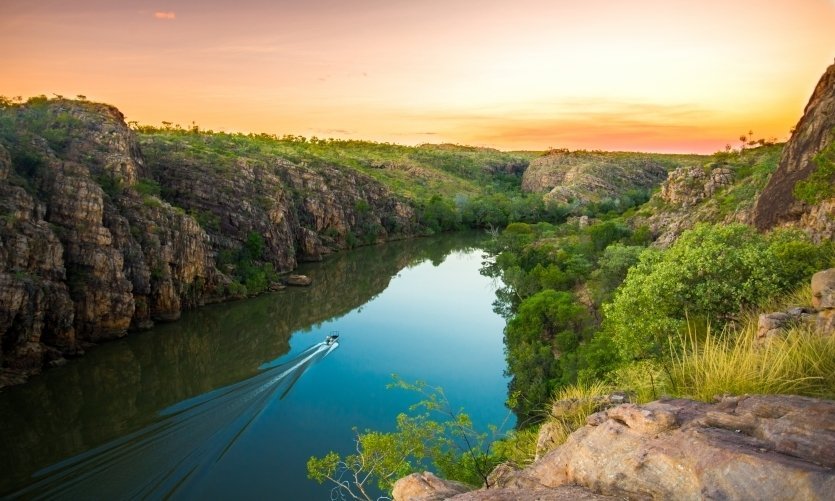
In Katherine, the landscapes change, the vegetation thickens and the heat becomes humid: welcome to the tropical Top End! The city lies on the banks of the Katherine River, which originates in the vast Nitmiluk National Park. This 3,000 km² park, crossed by thirteen gorges, is a sublime mixture of tropical forest and savannah. To explore it, many hiking trails are available to visitors. The gorges can be discovered during a cruise or a canoe trip. For a spectacular panorama, you can also fly over them by helicopter!
Kakadu National Park, a natural treasure
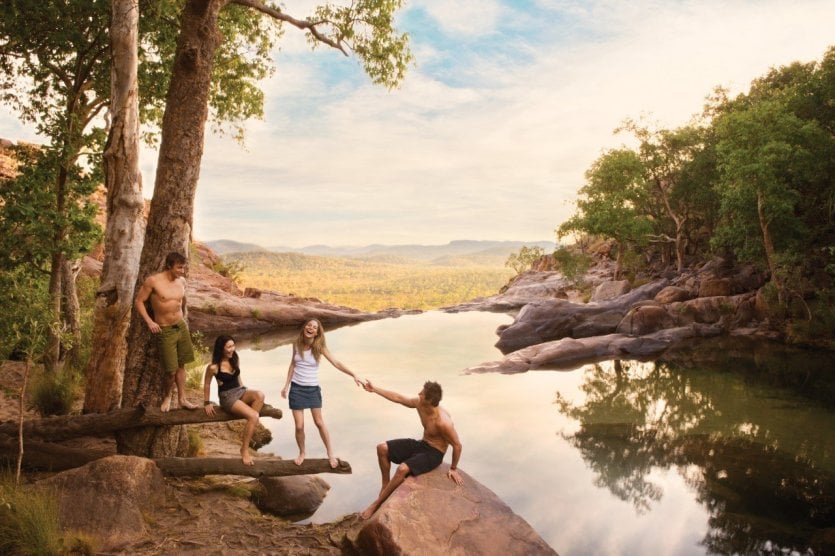
Kakadu National Park is the largest in Australia. Classified as a World Heritage Site since 1981, it is home to a preserved natural wealth of 20,000 m² on its territory. From mangroves to swamps and lush forests, its diverse ecosystem forms a true palette of colours! Many marine crocodiles also inhabit the park, resting in billabongs, typical Australian bodies of water. On the cultural side, we will not miss the many Aboriginal rock paintings such as those of Nourlangie Rock, some of which date back more than 40,000 years
Darwin, the tropical
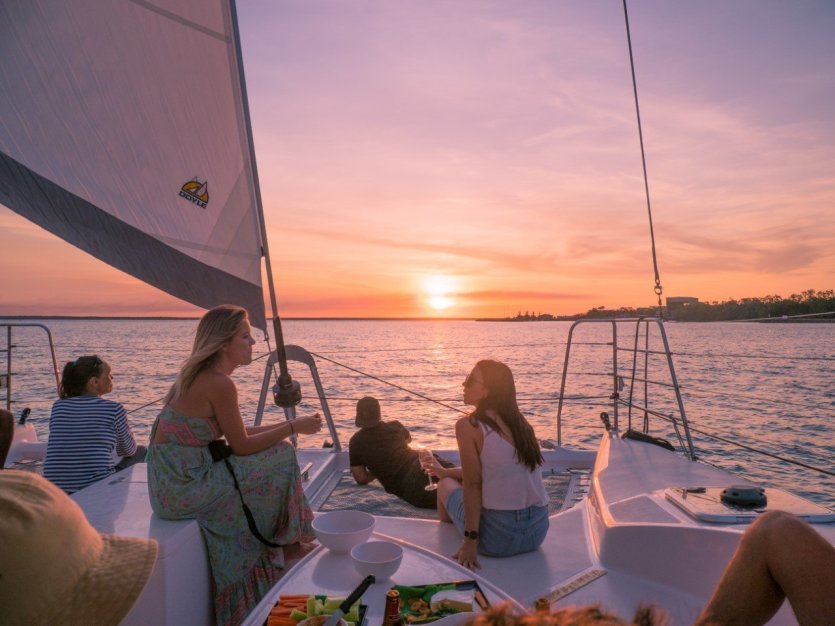
Darwin is where the Explorers Way starts or ends. The bay that borders the city is sublime, to be discovered during a sunset cruise: love at first sight guaranteed. We also particularly like its relaxed and cosmopolitan atmosphere. Here, only one credo: "No worries, mate! "and you quickly get a taste for it! From April to October, every Thursday and Sunday afternoon, the Mindil Beach market offers the opportunity to attend shows by jugglers and musicians while enjoying world cuisine on the beach, in a typically Australian atmosphere, facing the Arafura Sea. Darwin is also an ideal base for excursions to Litchfield and Kakadu National Parks or to the Tiwi Islands


